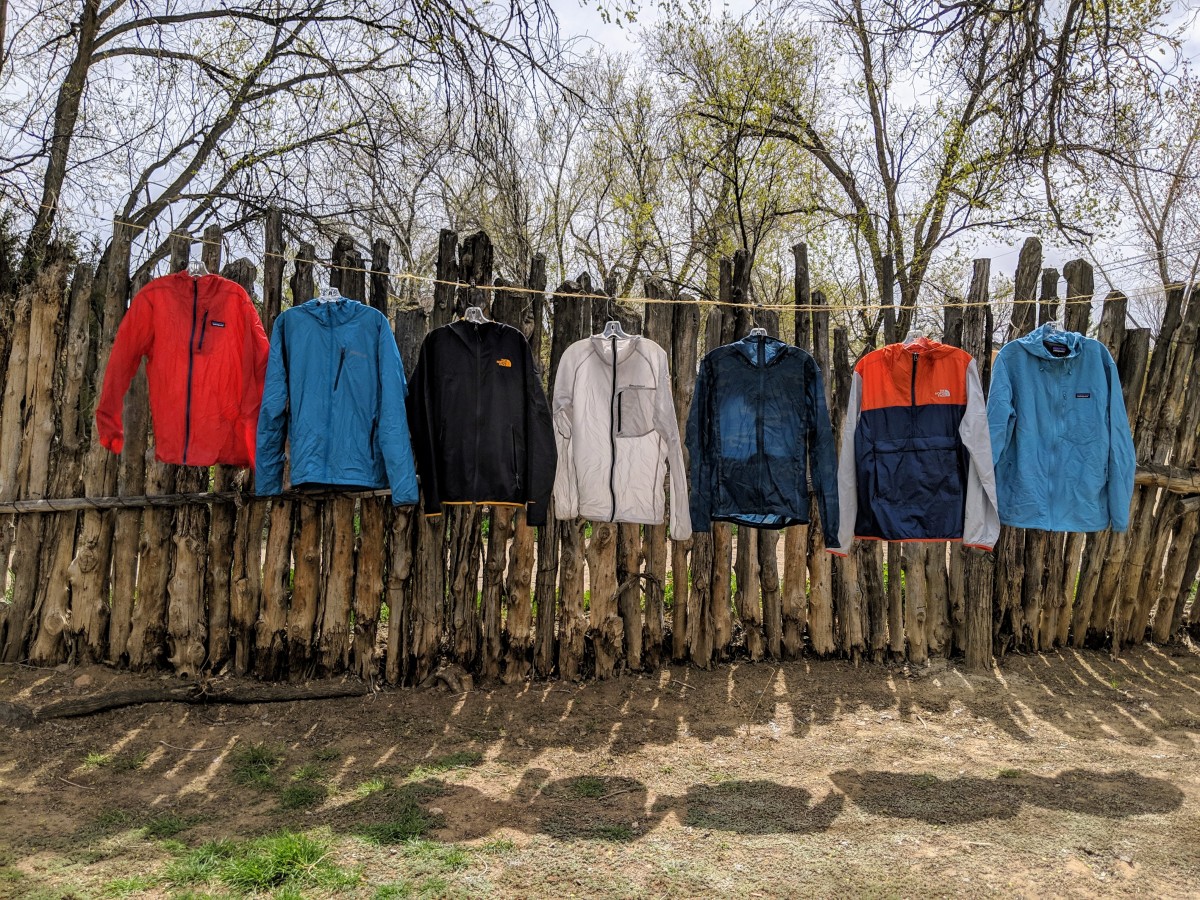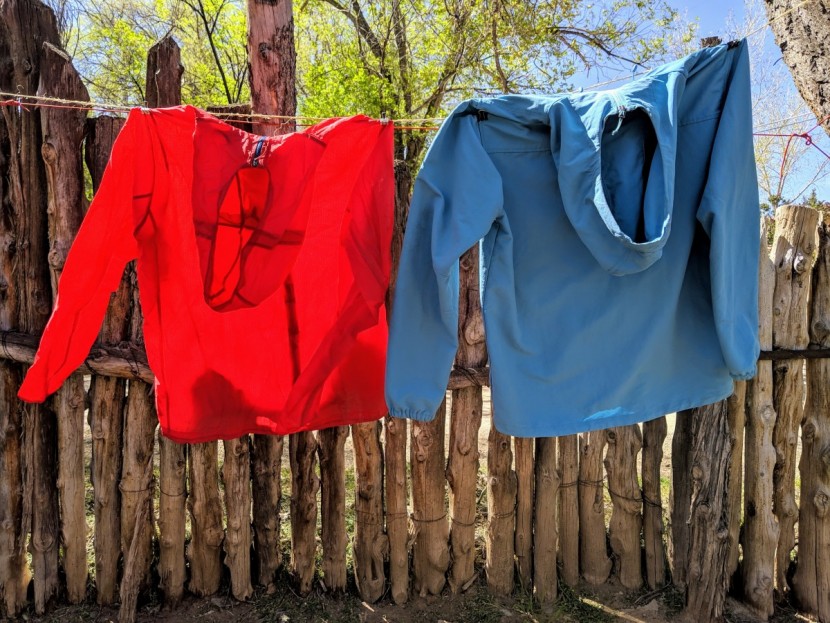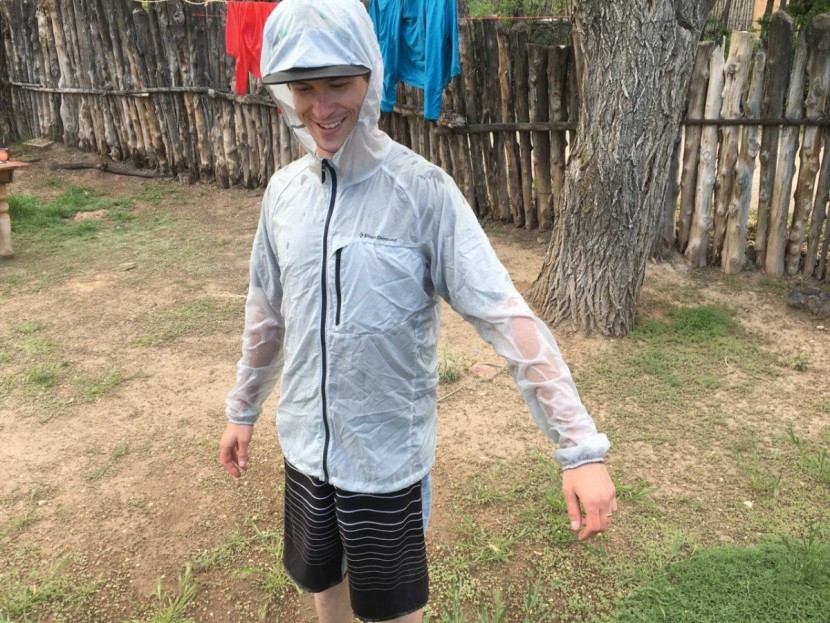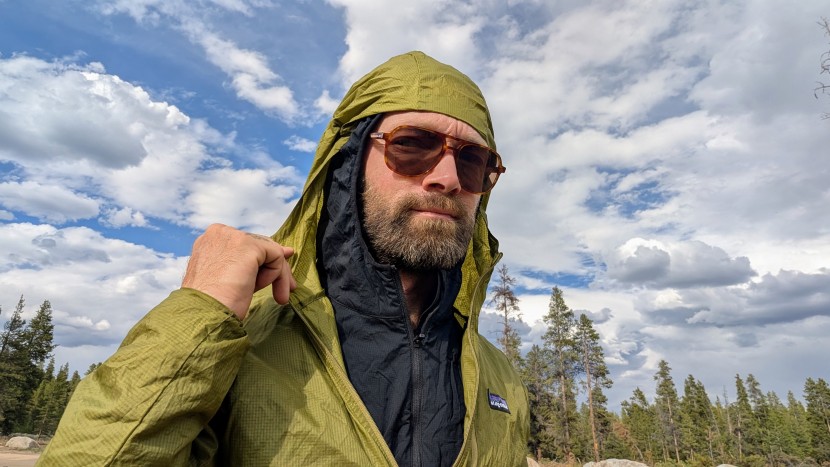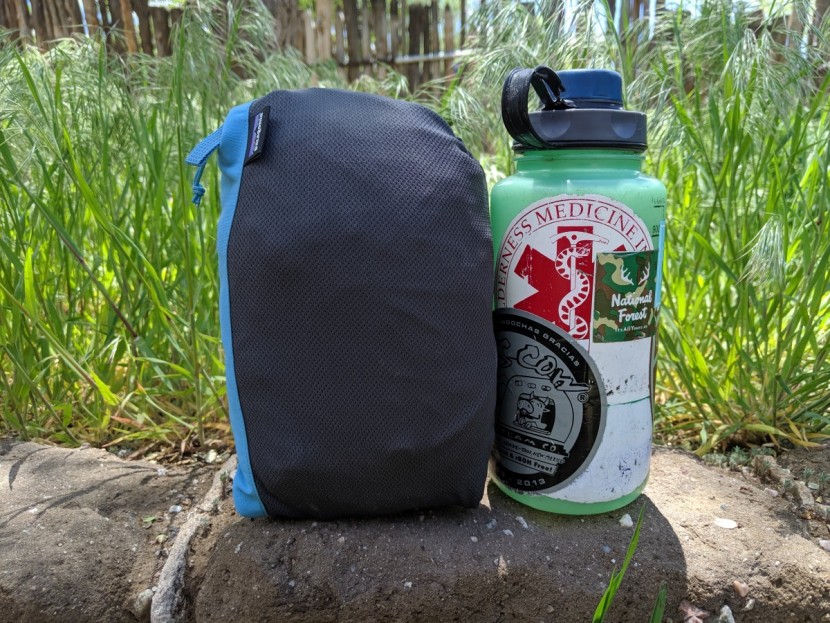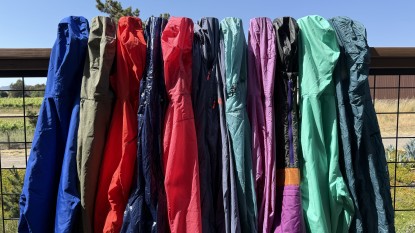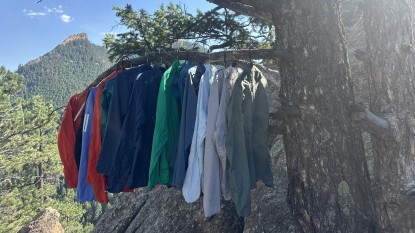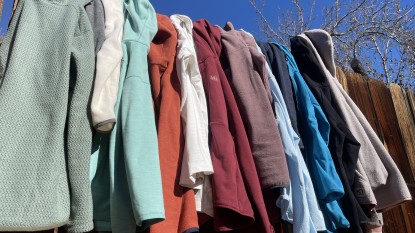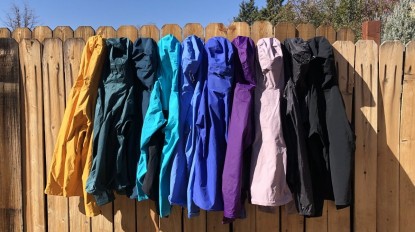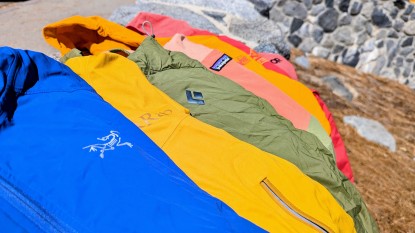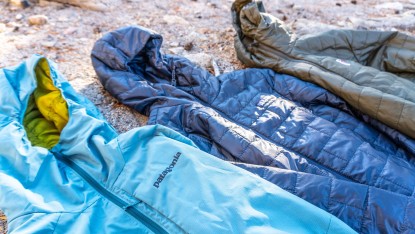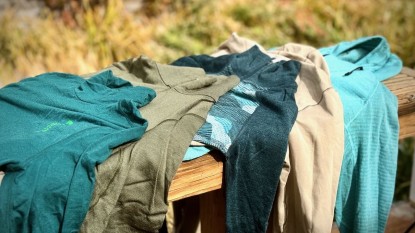Buying a new windbreaker jacket should be a pain-free experience, but it can be tough to narrow down your selection. This article will help you better understand the nuances of each jacket by pointing out the main features to consider and making recommendations for which windbreakers work best for specific outdoor activities.
The Need for a Windbreaker Jacket
In our opinion, windbreaker jackets are among the most versatile and useful outer garments you can buy. In a perfect world, the weather would perfectly accommodate every hike, bike, or climb you plan, but that's not always the case. Even a slight breeze or a drop in temperature can vastly affect how warm or cold your body feels, especially when working hard, and you don't want to let a little breeze stop you from adventuring.
We have all experienced a time when we stopped running in a cool breeze, dripping with sweat, relieved to let the body cool down. But then, mere moments later, we were cold and couldn't warm up. This is due to convective heat loss, or transfer of heat through air movement. The effects magnify as you move from a gentle breeze to a howling mountaintop wind, and if you are running, biking, hiking, or otherwise working out enough to produce sweat, you'll feel the effects even more. A windbreaker jacket provides the perfect barrier to slow this heat loss without adding too much weight or insulation.
The advantages of a windbreaker over other outer or thermal layers are:- They are super lightweight (the lightest are just over three ounces!)
- They are incredibly packable (they easily stuff into their own pocket)
- They are relatively cheap compared to rain jackets, hardshell jackets, or insulated jackets.
We find that we tend to reach for the windbreaker as our go-to first layering option for almost any outdoor adventure — from spring through summer into fall, and in some cases, even into winter.
Wind Breakers vs. Rain Jackets vs. Hardshell Jackets
There is a surprising amount of overlap between wind, rain, and hardshell jackets. Windbreakers are typically the lightest and thinnest outer shells you can own, but they aren't always as durable or weatherproof as their more expensive cousins. That said, we find ourselves wearing a simple windbreaker more often than either a hard shell or rain jacket because of its incredible portability, lower price, and increased breathability.
Wind BreakersThese are made primarily of wind-resistant and breathable nylon or similar lightweight material. Their construction makes them cheaper, lighter, and more compact, and allows greater breathability. Windbreakers don't have a waterproof membrane, but they can hold off some mild rainfall if they have a durable water-resistant (DWR) coating.
Rain Jackets
Rain jackets have 2 or 2.5 layer construction, fixing a waterproof/breathable membrane to an outer face fabric. In combination with a DWR coating, the membrane makes these jackets far more waterproof than single-layer windbreakers. However, the membrane also tends to make them less breathable, heavier, bulkier, and more expensive. This is the right choice if you're guaranteed to encounter rain. Check out our Best Rain Jackets for Men Review if this type of jacket better fits your needs.
Hardshell Jackets
The burliest and most expensive type of shell jacket, these jackets are constructed of 3 layers. A waterproof membrane is sandwiched between a more durable and stronger face fabric and a protective layer that sits against the body. The inner layer protects the membrane from abrasion and body oils and helps wick moisture. These jackets tend to be the most durable, hold onto their waterproof and breathable qualities the longest, and are the best option for working or very high-abrasion environments. They are also the best for staying out for hours in cold, snowy, or all-around bad weather. For more information, check out our review of the best hardshell jackets.
Types of Windbreakers
Windbreakers generally fall into three categories. These categories are not defined by the manufacturers or the industry, but are our way of differentiating these jackets and the situations in which we use them.
Single Layer NylonMost of the windbreakers we tested fit into the designation of “single-layer nylon.” This just means that they are one piece of thin, nylon fabric. They are generally the only piece of outerwear you have over your shirt, and tend to fit sleeker and tighter to the body. These jackets are best for warmer seasons and high-output activities, such as running, biking, climbing, or hiking.
Insulated
Occasionally, you'll come across a windbreaker designed with a fleece liner. The liner increases the wind resistance and helps wick moisture away from the body to help it breathe better. It also makes the jacket a fair bit warmer than single-layer models, which caused us to only reach for this jacket on cold mornings or once fall hit and the temperatures cooled down drastically.
Outer Shell
Some windbreakers are designed with features that allow them to function as very lightweight outer shells. We don't love wearing these as stand-alone wind protection because of their larger fit, and it is worth mentioning that they are not waterproof, but when layered over a lightweight fleece, they are a dream. These heavier options can be great for bike commuters.
Water Resistance and DWR
Windbreakers do not have a waterproof membrane, and the fabric alone cannot protect you from even the slightest amount of rain. However, many manufacturers apply a DWR coating to the outside of their jackets. DWR coatings cause water to bead up and fall off a fabric rather than soak in, and they help a fabric breathe better by keeping it dry. For light or passing rain showers, the DWR coatings on windbreakers prove quite effective, as long as you don't find yourself exposed to any sort of real rain for an extended period of time.
The limitation of DWR coatings is that they wear off with time. Of course, how long it lasts depends on the quality of the coating as well as the amount of abrasion that a jacket is exposed to. Unfortunately, wearing a pack is one of the main causes of abrasion, and can quickly rub off a jacket's DWR coating. The good news is that it is relatively easy to reapply a DWR layer at home. For more information on the importance of maintaining your jacket's DWR coating, as well as how to restore a jacket's DWR coating, check out this article on DWR Care from REI.
Wind Resistance vs. Breathability
Wind resistance is the key attribute of a windbreaker, but breathability is nearly as important. Both depend on the type and weave of the fabric, but in our experience, these attributes tend to work at odds with each other; if no air can move through, then the fabric will be very wind-resistant. If lots of air can pass through, then it will be very breathable. We ran into a lot of jackets that were very wind-resistant but not at all breathable, or very breathable but not super wind-resistant. However, there are a few unicorns out there that strike a nice balance between the two extremes.
Companies use two main techniques to get around this paradox. The first is to design the jacket with more breathable fabrics and then add a liner. The double layer greatly increases wind resistance by forcing wind to travel through more fabric. This works pretty well, but the unfortunate downside to this approach is that the extra material makes the jacket much warmer, and you might end up hot and sweaty anyway.
The second strategy is to have a fairly impermeable face fabric, meaning it is highly wind resistant (but doesn't breathe well), and then offset that with features that improve ventilation. This can mean adding a mesh lining or including lots of zippered pockets that can be opened up to dump heat and moisture when needed.
Price
The average price for one of these jackets is around $120, and some of our favorites can be had for much less than that. On one hand, this can seem like a lot of money for the amount of fabric and material you get. On the other hand, this is a fairly reasonable cost for an article of technical clothing, especially if you use your wind jacket as much as we use ours.
Recommendations for Specific Activities
These jackets are incredibly versatile — for the most part, they will work well no matter what form of adventure you might wear them for, but if you have a favored sport or a specific use in mind, take a look at the feature set of the jacket you are eyeing. Specific designs are sometimes better tailored to one activity over another.
RunningRunning is an activity that just begs for a windbreaker, especially trail running. While the most comfortable running outfit is a pair of shorts and a very light top, it is common to feel like you need a little bit more protection, especially on alpine routes. Sweating profusely can make the arms and core feel chilled in the wind, and full coverage is really nice on cool mornings or during winter runs. If trail running is what gets you outside most often, you'll want a windbreaker that prioritizes breathability, whether through material or heat-dumping features. You could also check out a sport-specific running jacket, but you might find that it's as versatile as a windbreaker.
Hiking and Peak Bagging
Hiking and Peak Bagging are generally slower-moving activities, but you can still work up a great amount of sweat if it is hot, sunny, or moving uphill at a good clip. Additionally, in alpine environments, you will probably encounter wind, rain, or even just cool air and shade that might chill you. A windbreaker is a perfect jacket for spring, summer, and fall hiking, and a fantastic choice for summer peak bagging. The incredible lightweight and great packability give you no excuse for not bringing one. For this use case, you'll want to find a jacket that has a good balance of wind resistance and breathability, even if it is not the absolute best at either one. Extra features like pockets can also come in handy on the trail, even if they add some weight.
Backpacking
Backpacking involves hiking and camping for many days on end, and weather resistance and weight savings are important factors. Because you are trying to carry as little as possible, you will be better off bringing only one jacket instead of both a rain jacket and a windbreaker. In this case, look for a jacket that is lighter weight, packs down smaller, and has a better water resistance rating. This might come at the cost of convenience features, but for multi-day backpacking trips, it's a tradeoff we recommend taking.
Climbing
A windbreaker is virtually a must-have for long trad climbing missions. If you are going to be out on the face all day, then surely you are going to experience plenty of wind, be in the shade a lot, potentially get rained on, and for sure deal with the temperature spikes and chills that come from intense effort broken up with a lot of sitting or standing around at a belay. A windbreaker can perfectly address all of these concerns. All of these jackets stuff down into one of their pockets, and most contain clip-in loops to attach to your harness.
For the average day of long trad climbing, as you find in Yosemite, the Black Canyon, Red Rocks, or Squamish, we think that a windbreaker is a worthy companion on the wall. Keep in mind that while some are made of ripstop nylon, the material is still extremely thin and may not stand up to much off-width climbing or chimneying. In more alpine situations, like climbing in Rocky Mountain National Park or on the high peaks of the Cascades or Sierras, when wet weather is far more likely and more disastrous if you were to get soaked, we recommend bringing a rain jacket.
Biking
For serious bikers and serious biking missions, a dedicated biking jersey and biking jacket are probably the way to go. However, for bike commuting, biking casually around town, or for a person who wants to cross-purpose their jacket, a windbreaker can be your new favorite piece. For casual or commute biking, you'll want to prioritize wind resistance above all other features, as air movement is the one thing you're guaranteed to encounter when on a bike. We also love these jackets for mountain biking missions, and if this is how you plan to use yours, you'll want to look for more breathable material and maybe a few zippered pockets.
Backcountry Skiing
A windbreaker for backcountry skiing? You might be surprised that we say “Yes!” While hardshells are still the go-to jackets for backcountry skiing, there are days when a windbreaker is more than sufficient and can save a lot of weight and space. This primarily works in places like Colorado, where ski days are often dry and clear. If you're on the East Coast or the Northwest, you'll benefit from the hardcore waterproofing of a hard shell.
When the air is calm, we typically skin up in only an underlayer and utilize a shell jacket exclusively for the descent. But if the wind is howling, as it often does in the mountains, a windbreaker shell can be more comfortable than a hard shell. On sunny, spring days where the weather seems borderline hot, we find that we only need a shell for protection from the wind. Features like adjustable hoods, elastic cuffs, and accessible pockets make them easy to use in this context.
Hanging Around TownThanks to their versatility, a windbreaker can be a functional around-town piece, providing warmth and protection from the wind, shade, or chilly temps. However, when assessing their feasibility as around-town garments, they suddenly need to compete with every other piece of clothing on the planet, and from a fashion standpoint, you'll have to use your own judgment as to whether these jackets stack up. Luckily, technical outdoor clothing these days is catching on, and thanks to the early 20's gorpcore trend and the rise of athletic wear as street wear, you might not feel so out of place in some of these jackets, even hanging around downtown.
Conclusion
Windbreaker jackets are incredibly versatile. We find ourselves reaching for one nearly every day, even when we're not testing them. We use these jackets for ski touring, climbing, biking, hiking, trail running, peak bagging, backpacking, fly fishing, dog walking, and even just hanging out around the campfire in the evening and morning. They could also be a great clothing option for sailing, canoeing, paragliding, SUPing, or any other outdoor activity where there is a chance of light weather. With so many potential uses and virtually no downside to simply bringing one along, there's no reason not to own a windbreaker. We hope this article was helpful for you while narrowing down your decisions.

